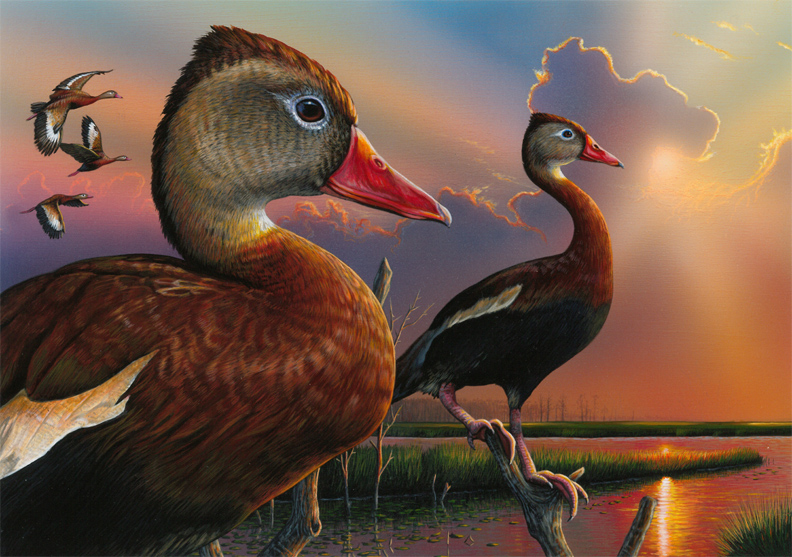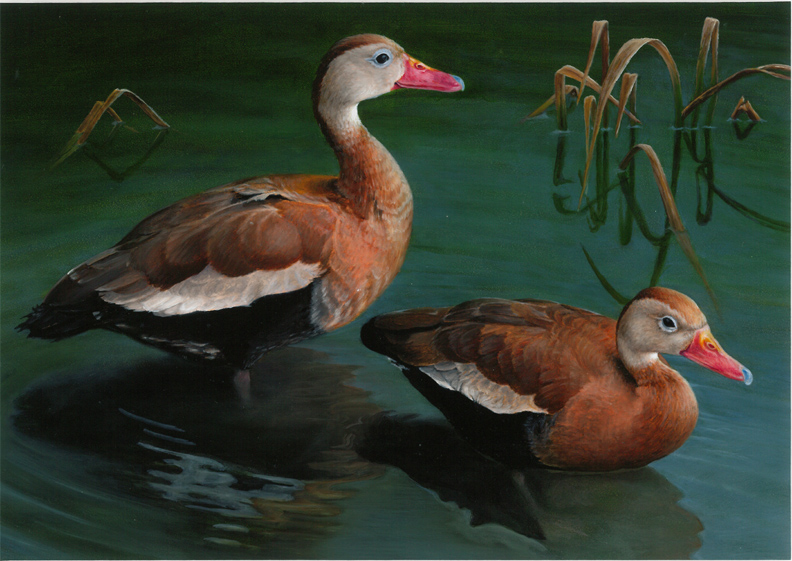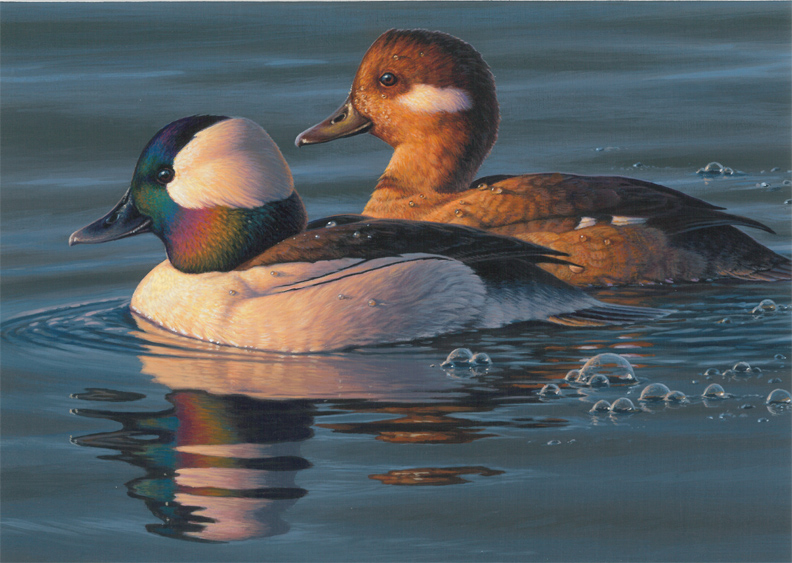
25 October 2019
After two days of competition, Eddie LeRoy of Eufala, Alabama, emerged as the winner of the Federal Duck Stamp Art Competition on 29 September. He did it with his painting of a pair of Black-bellied Whistling-Ducks. (View his winning work, above.) There were 190 qualified entries in the competition. Of these entries, only 13 made it to the final round of judging. The eligible species for this year’s Federal Duck Stamp Contest were the Black-bellied Whistling-Duck, Emperor Goose, American Black Duck, Bufflehead and Northern Shoveler. You can still view the online gallery with all the 2019 Federal Duck Stamp Art Contest entries.
LeRoy’s acrylic painting will be used for the 2020-2021 Migratory Bird Hunting and Conservation Stamp, or “Duck Stamp,” which will go on sale in late June 2020. The U.S. Fish and Wildlife Service, of course, produces the Stamp, which sells for $25 and raises approximately $40 million in sales each year. These crucial dollars are deposited into the Migratory Bird Conservation Fund, and they go toward the acquisition or lease of habitat in the Refuge System from willing sellers.

In addition to LeRoy, Cory McLaughlin of Wells, Texas, placed second with his oil painting of another Black-bellied Whistling-Duck pair, and Frank Mittelstadt of Beaver Dam, Wisconsin, took third place with his acrylic painting of a Bufflehead pair. Curiously, Mittlestadt placed second last year with his rendition of a perched male Wood Duck accompanied by a hunter with dog collecting decoys.

The judges for this year’s Federal Duck Stamp Contest were: Walter Matia, artist; Brian K. Schmidt, biologist; David Elwing, conservation partner and philatelist; Wayne Knight, artist; and Peggy Watkins, artist.
Since 1949, the artwork for the federal duck stamp has been chosen in a such a juried competition, originally in Washington, D.C., but now held at a different location each year. This year, the contest was held at the Patuxent Research Refuge in Laurel, Maryland, outside of the capital.
Eighty-five years after the Stamp was established, sales of the Duck Stamp to hunters, bird watchers, outdoor enthusiasts, and collectors have raised more than $1 billion. This amount has gone to conserve over six million acres of wetland and grassland habitat for birds and other wildlife, providing meaningful opportunities to enjoy our National Wildlife Refuge System.